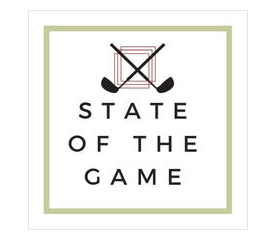In an unprecedented rebuke of the governing bodies—not coincidentally the week his tour lands in lowly Saudi Arabia—European Tour Chief Keith Pelley has blasted the Haotong Li penalty as, of course, detrimental to growing the game.
I’m about to dig in on a column about all of the things this brouhaha is really about, but in the meantime here is Pelley’s statement followed the R&A’s response that arrived 92 minutes later in my Inbox.
STATEMENT FROM EUROPEAN TOUR CEO KEITH PELLEY ON THE LI HAOTONG PENALTY
‘There has been much discussion and comment over the past 24 hours on the two-shot penalty given to Li Haotong for his breach of Rule 10.2b (4) on the 18th green of the Omega Dubai Desert Classic.
‘Let me state initially that, under the new Rules of Golf issued on January 1, 2019, the decision made by our referees was correct, under the strict wording of the rules. It is my strong belief, however, that the fact there is no discretion available to our referees when implementing rulings such as this is wrong and should be addressed immediately.
‘Everyone I have spoken to about this believes, as I do, that there was no malice or intent from Li Haotong, nor did he gain any advantage from his, or his caddie’s split-second actions. Therefore the subsequent two shot penalty, which moved him from T3 in the tournament to T12, was grossly unfair in my opinion.
‘In an era where we are striving to improve all aspects of golf, we need to be careful and find the proper balance between maintaining the integrity of the game and promoting its global appeal.
‘I have spoken personally to R&A Chief Executive Martin Slumbers to voice my opposition to the fact there is no discretion available to our referees in relation to this ruling, and I will be making additional representation to the R&A in the near future to discuss the matter further.’
I am sticking up for my players and making a lot of noise from my luxury hotel where the Crown Prince himself left me a welcome note!
STATEMENT FROM R&A CHIEF EXECUTIVE MARTIN SLUMBERS ON THE LI HAOTONG RULING
Martin Slumbers, Chief Executive of The R&A, said, “We have reviewed the Li Haotong ruling made by the European Tour referees and agree that it was correct. There has been some misunderstanding of the new Rule and I would point out that it is designed to prevent any opportunity for the caddie to stand behind the player as he begins to take his stance. Whether the player intends to be lined up is not the issue. We appreciate that it was a very unfortunate situation yesterday and I completely understand Keith Pelley's concerns when a Rules incident occurs at such a key stage of a European Tour event but there is no discretionary element to the Rule precisely so that it is easier to understand and can be applied consistently.
“We are continuing to monitor the impact of the new Rules but I made it clear to Keith that our focus is very much on maintaining the integrity of the Rules for all golfers worldwide.”
Here is our chat on Morning Drive today about this.

























